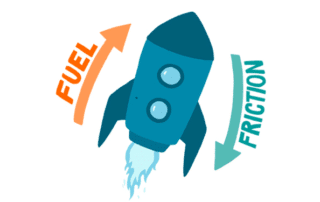Rationality, Disclosure, and the “Privacy Paradox”
Many of us say we care about our privacy, but often disclose personal information. This asymmetry is called the “privacy paradox”. This phenomenon is only a paradox, however, if we assume people are rational or engage in rational disclosure decision-making. Taking into account our cognitive biases and the way online platforms are designed, it comes as no surprise that our disclosure behavior doesn’t always match our privacy preferences.
In Mobile We Trust: How Mobile Reviews Influence Consumer Decisions
Consumers often use online reviews as a source of information in their decisions to purchase products and services. In our research, we examine a novel cue that consumers use to infer whether a review is effortful and credible: an indication that the review was written on a mobile device. Implications of this research may impact how brands and online platforms choose to encourage and disseminate consumer-generated-content.
When Awards Backfire
People use awards to incentivize positive behaviors all the time. Our research shows that, in some contexts, awards do not work and can even demotivate the target behavior. We find that awards might send unintended signals to recipients about the social norms and institutional expectations for the target behavior. Organizations and leaders considering using awards should know that awards can have more complicated consequences that might be intuitively expected.
Which Emotion Should a Charity Employ to Nudge Donations?
Charities have different moral objectives. Some seek to promote welfare (e.g., Red Cross), but others seek to promote justice and equality (e.g., ACLU). We demonstrate how these different charities can employ specific positive emotions in their campaigns to nudge donations. Charities that seek to promote welfare should utilize compassion in their campaigns, but charities that seek to promote equality in society should utilize gratitude in their campaigns.
A Loss Is a Loss, Why Categorize It?
Consumers regularly track their expenses and assign them to categories like food, entertainment, and clothing, which is popularly known as mental accounting. Our research shows that consumption biases that result from mental accounting are not prevalent in Easterners due to their holistic thinking style, whereas Westerners exhibit such biases due to their analytic thinking style.
The Three Laws of Human Behavior
Human behavior is remarkably complicated. And yet, just as Newton's laws of motion distill three fundamental truths about the physical world, the three laws of human behavior describe three fundamental truths of human behavior: People tend to stick to the status quo unless the forces of friction or fuel push us them off their path; behavior is a function of the person and their environment; every decision includes tradeoffs and the potential for unintended consequences.







